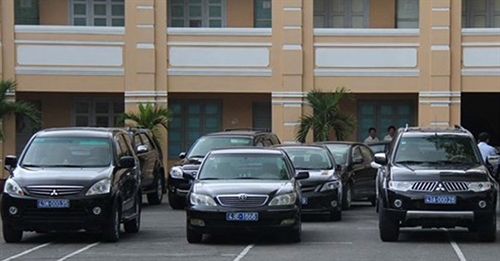Poor database stymies public asset management
 |
| Public assets are often managed by multiple agencies - Photo tapchitaichinh.vn |
The Government has made efforts to improve the management of public assets but the task is made difficult by its massive scale and deficient database.
According to the Ministry of Finance’s Public Asset Management Department, in the first six months of this year 766 different assets -- 69 land plots, 296 houses, and 384 cars -- were sold for a total of VNĐ746 billion (US$33.5 million).
In the period the Ministry took back assets worth VNĐ26 billion ($1.17 million) from 10 State-funded projects.
Another VNĐ35 trillion ($1.57 billion) was raised by rearranging and selling State-owned houses and lands.
“To make the management more effective, the Public Asset Management Department should review all existing policies and amend them if necessary,” Deputy Minister of Finance Nguyễn Hữu Chí told Thời báo Kinh tế Việt Nam (Việt Nam Economic Times) newspaper.
He said it should digitise the database on about public assets and improve oversight of them.
The department listed several difficulties in managing the assets.
While they are massive, there is no overall policy on how to use, exploit and manage these assets. Instead, they are found piecemeal in many separate decrees issued by different industries and ministries. As a result, there is no unified and up-to-date database on public assets.
Secondly, though the value of State offices and other assets worth over VNĐ500 million ($22,500) alone is around $47 billion and despite the fact the offices are often in prime locations, they have not been exploited properly.
Many have been approved for sale but the process is stalled because of the lack of detailed plans and persons vested with the authority to go ahead.
Thirdly, the transport infrastructure is not exploited effectively and return on investment is too low. The economic downturn and real estate market slump meant private investors were not keen on investing in roads, and the bulk of the responsibility fell on the Government. Besides, the lands along roads have not been exploited efficiently either.
Fourthly, since the cash-strapped authorities are not able to put “clean” public lands up for competitive bidding, the price discovery is not effective.
With more resources, they could pay compensation to land owners and auction off lands. Now, since lands are often sold with an encumbrance attached to them, they fetch low prices.
Fifthly, other assets like natural resources, water, forests, and seafood all lack precise information about economic value.
Finally, public assets are often managed by multiple agencies, making their management chaotic.
What the stars mean:
★ Poor ★ ★ Promising ★★★ Good ★★★★ Very good ★★★★★ Exceptional
Latest News
More News
- Requirements for foreign drivers, vehicles operating in Vietnam (December 13, 2024 | 11:03)
- Hanoi pushes To Lich river cleanup and urban wastewater overhaul (December 10, 2024 | 14:55)
- Green and smart transition to address urban challenges (December 10, 2024 | 11:47)
- Hanoi boosts night offerings but still trails rivals (December 10, 2024 | 11:33)
- Hanoi to promote 16 medicinal plant varieties for cultivation (December 06, 2024 | 19:11)
- Hanoi to enact economic-technical norms for training in 37 occupations (December 06, 2024 | 14:08)
- Hanoi creates 213,200 jobs, exceeding annual target by 29.1 per cent (December 06, 2024 | 14:04)
- Vehicle registration time cut to a few minutes in Hanoi (December 06, 2024 | 09:36)
- 14 Vinschool students top global rankings in Cambridge exams (December 05, 2024 | 18:27)
- Thousands flock to Hanoi for craft festival (December 05, 2024 | 18:25)















 Mobile Version
Mobile Version